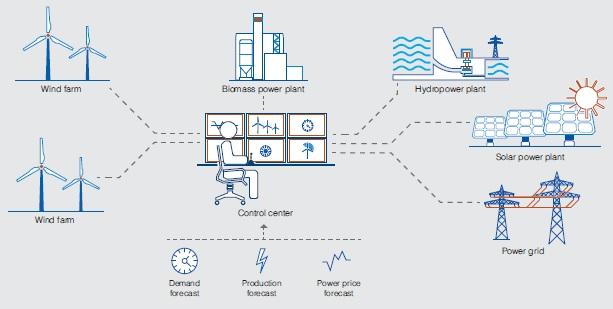
Effects of Methane Emissions and the Importance of Mitigation
The effects of methane emissions have become a significant concern in the global battle against climate change. For many years, methane was overlooked in discussions about climate change, despite its potent warming potential compared to carbon dioxide. Methane is a “short-lived climate forcer” (SLCF), meaning its effect is short-lived but highly destructive. In fact, one ton of methane has about 80 times the warming potential of a tonne of CO2.
Methane emissions are responsible for approximately 30% of today’s climate change, making them a significant contributor to global warming. Additionally, methane poses health hazards to people and can be deadly. Therefore, reducing methane emissions is critical in fighting climate change and protecting human health.
Trends in Methane Emissions
Unfortunately, methane emissions in the United States and worldwide are heading in the wrong direction. The increasing trend of methane emissions is concerning and requires immediate action to mitigate its impact on global warming.
The Importance of Methane Reduction
Reducing methane emissions is the fastest option available to slow the pace of global warming. It presents an opportunity to address climate change while transitioning to decarbonized energy systems. The Sustainable Development Goals (SDGs) set by the United Nations provide a framework for addressing climate change and promoting sustainable development.
Understanding Methane Emissions and Their Environmental Impact
Why is Methane Bad for the Environment?
Methane is the second most abundant anthropogenic greenhouse gas after CO2. It has a more powerful near-term warming effect than CO2, making it a significant driver of climate change. Methane emissions have contributed to about one-third of the increase in global greenhouse gas warming since pre-industrial times. The concentration of methane in the atmosphere has more than doubled in the past 200 years due to human activities.
Methane not only contributes to climate change but also poses acute and chronic hazards to human health. It is explosive within certain ranges, presenting a safety hazard in areas with high methane concentrations. Additionally, methane is the primary contributor to ground-level ozone, which is harmful to human health and linked to various respiratory and cardiovascular diseases.
Sources of Methane Emissions
Methane emissions come from both natural and anthropogenic sources. Natural sources include poorly managed wetlands, reservoirs, ponds, oceans, sediments, wildfires, volcanoes, and termites. Anthropogenic sources include agriculture (livestock raising), energy (oil and gas systems, coal mining), and waste management activities (landfills and wastewater treatment).
The International Energy Agency (IEA) estimates the contributions of different sectors to methane emissions. Agriculture is the largest anthropogenic source, responsible for about a quarter of total methane emissions. The energy sector, including emissions from coal, oil, natural gas, and biofuels, follows closely. Emissions from waste are the third-largest anthropogenic source.
Projections for Methane Emissions
Projections show that methane emissions from human activities are expected to increase by 2030. Coal mine releases are projected to increase by 17%, while emissions from oil and gas systems are forecasted to grow by 11% during the same period.
Mitigating Methane Emissions: Solutions and Opportunities
Addressing methane emissions requires a multi-faceted approach that involves technological advancements, policy interventions, and industry collaborations. Several organizations and companies are working towards reducing methane emissions and providing solutions to mitigate its impact.
Plugging Abandoned Oil Wells
Abandoned and orphaned oil and gas wells are a significant source of methane emissions. The Biden administration has initiated a well-plugging program to identify and plug these wells, aiming to reduce methane emissions by investing nearly $5 billion. This program presents an opportunity to address a substantial source of methane emissions and prevent further environmental damage.
Using Satellite Technology for Detection
Satellite technology has revolutionized the detection and monitoring of methane emissions. Satellites can detect and measure methane releases from leaks in pipes, venting, and other sources. This technology has helped identify previously unknown sources of methane emissions and enables timely repairs to mitigate further leakage.
Investing in Methane Offsets
Companies like Zefiro Methane Corporation offer opportunities for investors to support methane reduction efforts. Zefiro focuses on plugging abandoned wells and converting the reductions in methane emissions into carbon credits. By investing in Zefiro, individuals can contribute to reducing methane emissions and supporting the transition to a greener future.
Methane Reduction in Agriculture
Mootral, an agritech company, has developed a feed supplement called Mootral Ruminant that reduces methane emissions from livestock. By feeding animals this supplement, farmers can achieve significant reductions in methane emissions. Mootral’s CowCredit program allows farmers to convert these reductions into carbon credits, providing economic incentives for sustainable farming practices.
Conclusion
Methane emissions pose a significant threat to the environment and human health. Mitigating these emissions is crucial in the fight against climate change and achieving the Sustainable Development Goals. By investing in methane reduction initiatives and supporting companies that focus on plugging abandoned wells and reducing emissions in the agriculture sector, individuals can contribute to a more sustainable and greener future.
SDGs, Targets, and Indicators
| SDGs | Targets | Indicators |
|---|---|---|
| SDG 13: Climate Action | Target 13.2: Integrate climate change measures into national policies, strategies, and planning | Indicator not mentioned in the article |
| SDG 3: Good Health and Well-being | Target 3.9: By 2030, substantially reduce the number of deaths and illnesses from hazardous chemicals and air, water, and soil pollution and contamination | Indicator not mentioned in the article |
| SDG 7: Affordable and Clean Energy | Target 7.2: By 2030, increase substantially the share of renewable energy in the global energy mix | Indicator not mentioned in the article |
| SDG 9: Industry, Innovation, and Infrastructure | Target 9.4: Upgrade infrastructure and retrofit industries to make them sustainable, with increased resource-use efficiency and greater adoption of clean and environmentally sound technologies and industrial processes | Indicator not mentioned in the article |
| SDG 12: Responsible Consumption and Production | Target 12.4: By 2020, achieve the environmentally sound management of chemicals and all wastes throughout their life cycle, in accordance with agreed international frameworks, and significantly reduce their release to air, water, and soil to minimize their adverse impacts on human health and the environment | Indicator not mentioned in the article |
| SDG 15: Life on Land | Target 15.2: By 2020, promote the implementation of sustainable management of all types of forests, halt deforestation, restore degraded forests, and substantially increase afforestation and reforestation globally | Indicator not mentioned in the article |
1. The SDGs addressed or connected to the issues highlighted in the article are SDG 13: Climate Action, SDG 3: Good Health and Well-being, SDG 7: Affordable and Clean Energy, SDG 9: Industry, Innovation, and Infrastructure, SDG 12: Responsible Consumption and Production, and SDG 15: Life on Land.
2. The specific targets under those SDGs that can be identified based on the article’s content are:
– Target 13.2: Integrate climate change measures into national policies, strategies, and planning.
– Target 3.9: By 2030, substantially reduce the number of deaths and illnesses from hazardous chemicals and air, water, and soil pollution and contamination.
– Target 7.2: By 2030, increase substantially the share of renewable energy in the global energy mix.
– Target 9.4: Upgrade infrastructure and retrofit industries to make them sustainable, with increased resource-use efficiency and greater adoption of clean and environmentally sound technologies and industrial processes.
– Target 12.4: By 2020, achieve the environmentally sound management of chemicals and all wastes throughout their life cycle, in accordance with agreed international frameworks, and significantly reduce their release to air, water, and soil to minimize their adverse impacts on human health and the environment.
– Target 15.2: By 2020, promote the implementation of sustainable management of all types of forests, halt deforestation, restore degraded forests, and substantially increase afforestation and reforestation globally.
3. There are no specific indicators mentioned or implied in the article that can be used to measure progress towards the identified targets.
Behold! This splendid article springs forth from the wellspring of knowledge, shaped by a wondrous proprietary AI technology that delved into a vast ocean of data, illuminating the path towards the Sustainable Development Goals. Remember that all rights are reserved by SDG Investors LLC, empowering us to champion progress together.
Source: carboncredits.com

Join us, as fellow seekers of change, on a transformative journey at https://sdgtalks.ai/welcome, where you can become a member and actively contribute to shaping a brighter future.






